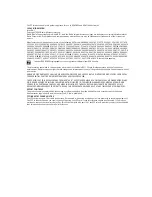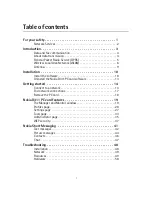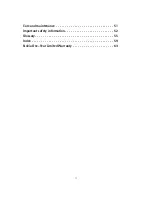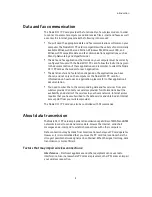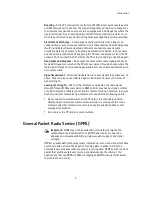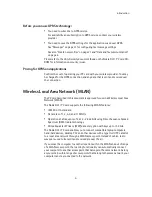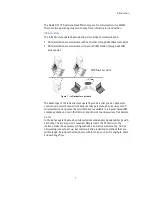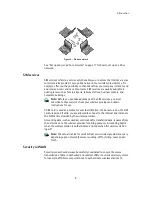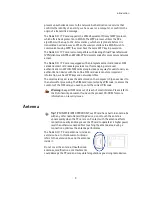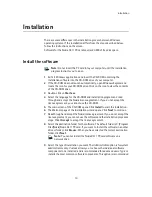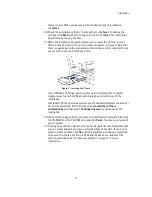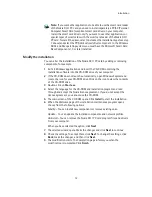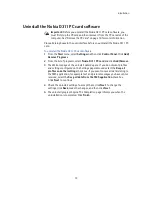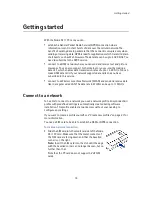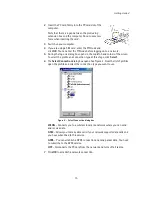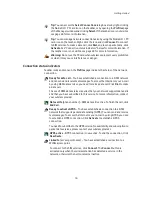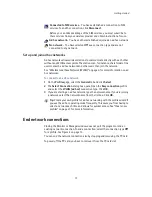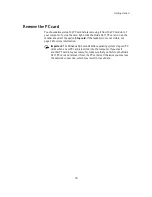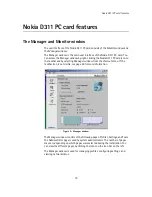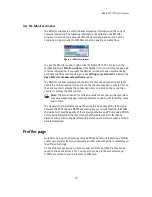
Introduction
5
Roaming
– As the PC card user moves from one WLAN access point coverage area
or GSM network cell to another, the signal strength may drop. As a consequence,
the network may hand the user over to a coverage area and frequency where the
signal is stronger. Due to varying network traffic loads, roaming may also occur
when the user is stationary. Such roaming may cause slight delays in transmission.
Electrostatic discharge
– A discharge of static electricity from a finger or a
conductor may cause erroneous functions in electrical devices. The discharge may
result in unstable software operation. Network connections may become
unreliable, data may become corrupted, and transmission halted. In those cases,
end the existing connection (if any), stop the PC card, and remove it from the PC
card slot. Then re-insert the PC card into the PC card slot and try connecting again.
Dead spots and dropouts
– Dead spots are areas where radio signals cannot be
received. Dropouts occur when the PC card user passes through an area where the
radio signal is blocked or reduced by geographical or structural obstructions, such
as concrete walls.
Signal impairment
– Distance and obstacles can cause signals to become out-of-
phase. They can also cause reflected signals. Both situations result in a loss of
signal strength.
Low signal strength
– Due to either distance or obstacles, the radio signal
strength from a WLAN access point or GSM cell site may not be strong or stable
enough to provide a reliable connection for communication. Therefore, to ensure
the best possible communication, remember to consider the following points:
•
Data connection works best when the PC card is in a stationary position.
Attempting wireless data communication while in a moving vehicle is not
recommended. Fax transmission is more easily impaired than data or text
message transmission.
•
Do not place the PC card on a metal surface.
General Packet Radio Service (GPRS)
Important:
GPRS may not be available in all wireless networks. The
establishment and continuation of a GPRS and Internet connection
depends on network availability, wireless provider support, and signal
strength.
GPRS is a packet data technology where information is sent in short bursts of data
over the mobile network. The benefit of sending data in packets is that the
network is occupied only when sending or receiving data. GPRS as such is a data
bearer that enables wireless access to data networks like the Internet. The
applications that use GPRS are SMS messaging and GPRS dial-up (for example,
the Internet and e-mail).
Summary of Contents for D311
Page 1: ...User Guide Issue 1 ...


